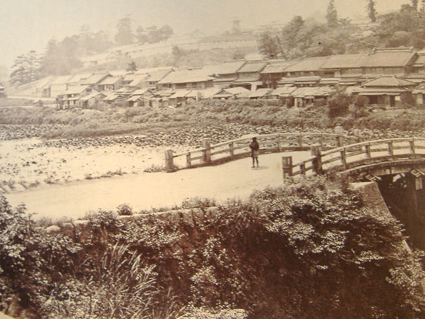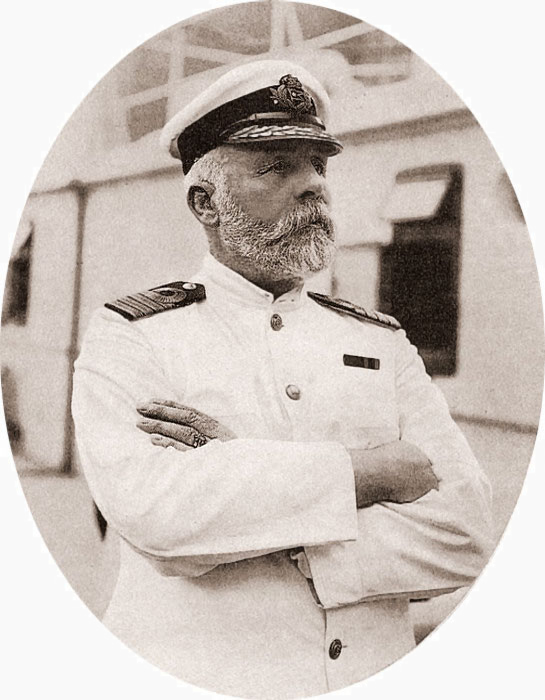|
Yamaguchi Tamon
was a rear admiral in the Imperial Japanese Navy who served during the Second Sino-Japanese War, and in the Pacific War during World War II. Yamaguchi′s carrier force was part of the attack on Pearl Harbor. He subsequently participated in the Battle of Midway, where he was killed in action, choosing to go down with the aircraft carrier when she was scuttled after being crippled by aircraft from and . Biography Early career Yamaguchi was born in Koishikawa Tokyo, and was the third son of a former samurai retainer of Matsue Domain. His given name "Tamon" was the childhood name of the medieval hero Kusunoki Masashige. He attended the Kaisei Academy and was accepted into the 40th class of the Imperial Japanese Naval Academy, which he graduated in 1912, ranked 21st out of 144 cadets. His classmates included Takijirō Ōnishi and Matome Ugaki. As an ensign, he served on the cruiser and battleship . After his commissioning as a lieutenant, he completed naval artillery and ... [...More Info...] [...Related Items...] OR: [Wikipedia] [Google] [Baidu] |
Tokyo
Tokyo (; ja, 東京, , ), officially the Tokyo Metropolis ( ja, 東京都, label=none, ), is the capital and largest city of Japan. Formerly known as Edo, its metropolitan area () is the most populous in the world, with an estimated 37.468 million residents ; the city proper has a population of 13.99 million people. Located at the head of Tokyo Bay, the prefecture forms part of the Kantō region on the central coast of Honshu, Japan's largest island. Tokyo serves as Japan's economic center and is the seat of both the Japanese government and the Emperor of Japan. Originally a fishing village named Edo, the city became politically prominent in 1603, when it became the seat of the Tokugawa shogunate. By the mid-18th century, Edo was one of the most populous cities in the world with a population of over one million people. Following the Meiji Restoration of 1868, the imperial capital in Kyoto was moved to Edo, which was renamed "Tokyo" (). Tokyo was devastate ... [...More Info...] [...Related Items...] OR: [Wikipedia] [Google] [Baidu] |
Rear Admiral
Rear admiral is a senior naval flag officer rank, equivalent to a major general and air vice marshal and above that of a commodore and captain, but below that of a vice admiral. It is regarded as a two star "admiral" rank. It is often regarded as a two-star rank with a NATO code of OF-7. The term originated in the days of naval sailing squadrons and can trace its origins to the Royal Navy. Each naval squadron was assigned an admiral as its head, who commanded from the centre vessel and directed the squadron's activities. The admiral would in turn be assisted by a vice admiral, who commanded the lead ships that bore the brunt of a battle. In the rear of the squadron, a third admiral commanded the remaining ships and, as this section was considered to be in the least danger, the admiral in command of it was typically the most junior. This has continued into the modern age, with rear admiral the most junior admiralty of many navies. In most European navies, the equivalent rank i ... [...More Info...] [...Related Items...] OR: [Wikipedia] [Google] [Baidu] |
Imperial Japanese Naval Academy
The was a school established to train line officers for the Imperial Japanese Navy. It was originally located in Nagasaki, moved to Yokohama in 1866, and was relocated to Tsukiji, Tokyo in 1869. It moved to Etajima, Hiroshima in 1888. Students studied for three or four years, and upon graduation were ordered (warranted) as Midshipmen, commissioned to the rank of Ensign/ Acting Sub-Lieutenant after a period of active duty and an overseas cruise. In 1943, a separate school for naval aviation was opened in Iwakuni, and in 1944, another naval aviation school was established in Maizuru. The Academy was closed in 1945, when the Imperial Japanese Navy was abolished. The Naval Academy Etajima opened in 1956 and the site now serves as the location for Officer Candidate School of the Japan Maritime Self-Defense Force. See also *Imperial Japanese Army Academy * Army War College *Imperial Japanese Army Air Force Academy *Imperial Japanese Navy *Imperial Japanese Naval Engineering College *Na ... [...More Info...] [...Related Items...] OR: [Wikipedia] [Google] [Baidu] |
Kaisei Academy
The Kaisei Academy (開成学園) is a preparatory private secondary school for boys located in the Arakawa ward of Tokyo, Japan. It was founded in 1871. The Kaisei Academy has since educated notable figures across many different fields and is considered one of the most prestigious schools in the country. As of 2021, the school has had the most number of entrants to the University of Tokyo, which is regarded as the best university in Japan. Overview Founded in 1871, the Kaisei Academy has produced a large number of notable alumni. Every year three hundred students are admitted to its junior high school, and one hundred students to its high school. The school's primary policy is 質実剛健 (Shitsu-jitsu-gou-ken), which means strong, simple, or spartan. The school policy is well represented in its school events such as an athletic meeting, marathon, swimming summer school, annual boat race with Senior High School at Otsuka, University of Tsukuba. History The school, which ha ... [...More Info...] [...Related Items...] OR: [Wikipedia] [Google] [Baidu] |
Kusunoki Masashige
was a Japanese samurai of the Kamakura period remembered as the ideal of samurai loyalty. Kusunoki fought for Emperor Go-Daigo in the Genkō War to overthrow the Kamakura shogunate and restore power in Japan to the Imperial Court. Kusunoki was a leading figure of the Kenmu Restoration in 1333 and remained loyal to the unpopular Emperor Go-Daigo after Ashikaga Takauji began to reverse the restoration in the Nanboku-chō wars three years later. Kusunoki attacked Takauji in Settsu at the command of the Emperor, an act of obedience surely to result in defeat, and died at the Battle of Minatogawa in 1336. Kusunoki became a popular legend in Japan representing loyalty and virtue, and associated with the phrase "Would that I had seven lives to give for my country!" (七生報國; "''Shichishō Hōkoku!''"). Kusunoki was posthumously awarded the highest court rank in Japan, Senior First Rank (''shō ichi-i)'', by the Meiji government in 1880, over 500 years after his death. Early ... [...More Info...] [...Related Items...] OR: [Wikipedia] [Google] [Baidu] |
Matsue Domain
was a Japanese domain of the Edo period. It was associated with Izumo Province in modern-day Shimane Prefecture."Izumo Province" at JapaneseCastleExplorer.com retrieved 2013-4-27. In the , Matsue was a and abstraction based on periodic surveys and projected agricultural yields. In other wor ... [...More Info...] [...Related Items...] OR: [Wikipedia] [Google] [Baidu] |
Samurai
were the hereditary military nobility and officer caste of medieval and early-modern Japan from the late 12th century until their abolition in 1876. They were the well-paid retainers of the '' daimyo'' (the great feudal landholders). They had high prestige and special privileges such as wearing two swords and ''Kiri-sute gomen'' (right to kill anyone of a lower class in certain situations). They cultivated the '' bushido'' codes of martial virtues, indifference to pain, and unflinching loyalty, engaging in many local battles. Though they had predecessors in earlier military and administrative officers, the samurai truly emerged during the Kamakura shogunate, ruling from 1185 to 1333. They became the ruling political class, with significant power but also significant responsibility. During the 13th century, the samurai proved themselves as adept warriors against the invading Mongols. During the peaceful Edo period (1603 to 1868), they became the stewards and chamberlains of ... [...More Info...] [...Related Items...] OR: [Wikipedia] [Google] [Baidu] |
Koishikawa
is a district of Bunkyo, Tokyo. It consists of five sub-areas, . In Koishikawa are located two well regarded gardens: the Koishikawa Botanical Garden (operated by the University of Tokyo) in Hakusan, and the Koishikawa Korakuen Garden in Kōraku. Train stations for accessing this locality include , , , and Myōgadani Station. The Koishikawa arsenal was an important military installation during the Meiji era. Education Bunkyo operates the local public elementary and middle schools. Zoned elementary schools are: Kanatomi ( 金富小学校), Kubomachi ( 窪町小学校), Rekisen ( 礫川小学校), and Yanagicho ( 柳町小学校). Zoned junior high schools are: No. 1 ( 第一中学校), No. 3 ( 第三中学校), and Meidai ( 茗台中学校). Koishikawa High School is operated by the Tokyo Metropolitan Government Board of Education. In addition the metropolis operates the Koishikawa Secondary Education School. Image:Koishikawastreets.JPG, Residential street in Koishikaw ... [...More Info...] [...Related Items...] OR: [Wikipedia] [Google] [Baidu] |
Scuttling
Scuttling is the deliberate sinking of a ship. Scuttling may be performed to dispose of an abandoned, old, or captured vessel; to prevent the vessel from becoming a navigation hazard; as an act of self destruct, self-destruction to prevent the ship from being captured by an enemy force (or, in the case of a vessel engaged in illegal activities, by the authorities); as a blockship to restrict navigation through a Channel (geography), channel or within a harbor; to provide an artificial reef for divers and marine life; or to alter the flow of rivers. Notable historical examples Skuldelev ships (around 1070) The Skuldelev ships, five Viking ships, were sunk to prevent attacks from the sea on the Danish city of Roskilde. The scuttling blocked a major waterway, redirecting ships to a smaller one that required considerable local knowledge. Cog near Kampen (early 15th century) In 2012, a Cog (ship), cog preserved from the keel up to the decks in the silt was discovered alongside ... [...More Info...] [...Related Items...] OR: [Wikipedia] [Google] [Baidu] |
The Captain Goes Down With The Ship
"The captain goes down with the ship" is a maritime tradition that a sea captain holds ultimate responsibility for both their ship and everyone embarked on it, and in an emergency will either save those on board or die trying. Although often connected to the sinking of RMS ''Titanic'' in 1912 and its captain, Edward J. Smith, the tradition precedes ''Titanic'' by at least 11 years. In most instances, captains forgo their own rapid departure of a ship in distress, and concentrate instead on saving other people. It often results in either the death or belated rescue of the captain as the last person on board. History The tradition is related to another protocol from the nineteenth century: "women and children first". Both reflect the Victorian ideal of chivalry, in which the upper classes were expected to adhere to a morality tied to sacred honor, service, and respect for the disadvantaged. The actions of the captain and men during the sinking of in 1852 prompted praise from many ... [...More Info...] [...Related Items...] OR: [Wikipedia] [Google] [Baidu] |





